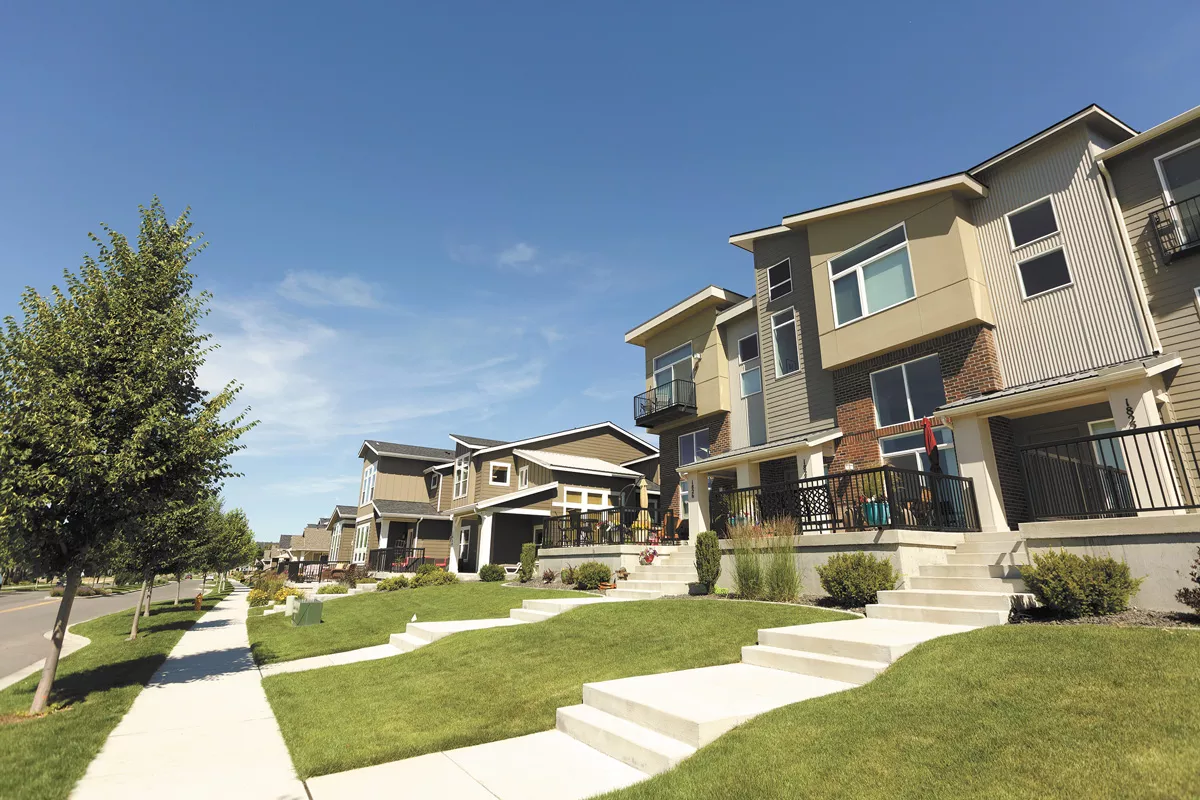
What does a housing crisis look like? Recently, the head of a local lab at a large medical facility and one of our region's largest employers contacted me to let me know that his employees are all seeing rent increases of over 30 percent in the next 60 days. He is worried that none of his full-time employees can afford to live in Spokane. Markets work like this: When there is no supply, prices increase. There are simply no other options for the employees at this facility. The people who check our groceries, draw our blood and flip our burgers ought to be able to afford to live inside the city limits.
What does housing mean? We have the rental market (which are mostly apartments), home ownership and low-income housing. Low-income housing is defined as apartments or homes that were built with government subsidy and can accept housing vouchers. The other two are considered market rate. Housing discussions should include all three.
Is there really a housing crisis? As of last week, nationwide data showed Spokane saw the largest rent increases in the country over the last year. Market-rate apartment rents have risen almost 30 percent and market-rate home prices have risen by 29 percent during that time, but wages have not kept pace. Low-income housing is becoming impossible to find. If you lose your job and apartment, the average time to get into low-income housing is three years.
This is bad for Spokane — not only because community members can't afford to live here, but also because more people are moving farther and farther away. Spokane, once the urban core of our region, is now on the edge, with Liberty Lake and Kootenai County in Idaho building more and more housing, draining Spokane's growth. If this continues, in 20 years Spokane will be a suburban shell and the center of commerce will have moved east.
Spokane, once the urban core of our region, is now on the edge, with Liberty Lake and Kootenai County in Idaho building more and more housing, draining Spokane's growth.
If we know the issue is lack of supply, why aren't we building? Current homeowners are seeing their wealth escalate. They see a nest egg for retirement. Current homeowners don't want their neighborhoods to change at all. These are the people who vote. Politicians know that. The folks in charge of funding more low-income housing, changing zoning to allow more apartments and changing regulations to allow townhomes in current single-family-zoned areas know who votes. The wants of the people who vote are very different from the needs of people who rent an apartment, work two minimum-wage jobs and still spend 50 percent of their income on rent. Voter turnout in wealthy neighborhoods swamps turnout in poor neighborhoods.
To make matters worse, the state's Growth Management Act prohibits urban sprawl, but lacks tools to mandate density in existing urban areas. Spokane has strong neighborhood councils. Most citizens who can afford to attend monthly meetings and influence policy want their neighborhood to stay the same. When you combine strong neighborhoods, a law that limits sprawl and a populace who enjoys seeing their wealth increase, you get stagnation and lack of supply.
Do solutions exist? Yes, build more low-income housing and do it in every neighborhood. Mixed-income neighborhoods are healthier, more connected and safe. They stop us from "othering" members of our community. Our community has $200 million in discretionary American Recovery Plan funding. Let's set aside 20 percent of the funds for low-income housing, so someone who loses their apartment or ends up on the streets has a roof over their head. The city and the county have a proposal in front of them to put $40 million immediately into low-income housing and could act right away. That would equate to 2,000 more people housed.
We also must allow for more diversity of housing in single-family zones. People get frightened when they hear the terms "end single family zoning," but what it really means is to change the transitional lot rules, the setback rules and other regulations to allow townhomes, duplexes and triplexes in areas that now consist of houses with big lawns. This will increase ownership opportunities and allow for infill on vacant lots all around town. The city knows which code to change, and this can be done in the next 90 days. Imagine wanting to downsize when the kids go to college and being able to do that in the same neighborhood. Think Kendall Yards-style housing variety.
Finally, we must create density in appropriate areas of our community. Spokane has had a comprehensive plan for the last 30 years focused on a "centers and corridors" strategy. Unfortunately, over 70 percent of these areas are surrounded by single-family homes. A small business cannot survive on car traffic alone. For these small walkable business districts to be successful, you need to have foot traffic. Let's create a quarter-mile radius from each center and corridor boundary and rezone to allow multifamily housing. Business districts will thrive. By creating the density, we create walkable neighborhoods and public safety is proven to increase. Housing prices will stabilize.
When rents and home prices skyrocket and there is no low-income housing available, you have a crisis. The short-term consequences may be nice if you currently are a landlord or if you own a home, but in 20 years we will be but a shell of a community. Now is the time to act like a community and make decisions for the betterment of all of us. ♦
Ben Stuckart was born in Spokane and attended Lewis and Clark High School and Gonzaga University. He spent 13 years working in the event-ticketing industry, started a couple nonprofits and was City Council president from 2012-19. He is currently the executive director of the Spokane Low Income Housing Consortium as well as doing some side consulting.
